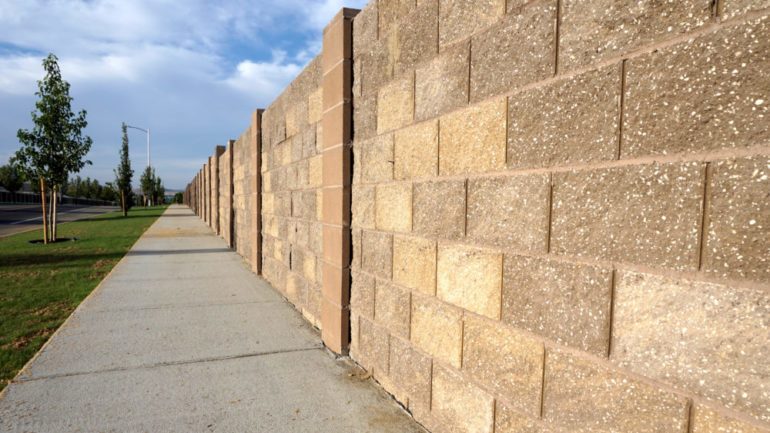Urban living offers conveniences such as nearby shopping, entertainment, and public transportation. The flip side of those amenities is the noise they bring. The same holds true if you live near a highway or airport. Installing sound barriers both inside and outside your home can bring much-appreciated peace and quiet. Let’s learn more about home sound barriers.
Sound buffering outside your home
A sound-barrier fence is a good solution for reducing neighborhood racket. Be prepared, however, for the fence’s price tag to be much more expensive than for a standard fence.
Home sound barrier fences must be taller than the standard six-foot fence, particularly if noise is a problem on your elevated deck or screened porch. The higher the fence, the greater the reduction in noise; eight feet is the minimum height for making a difference in the amount of sound that reaches your property. You can make a standard-height fence taller by building it atop a berm or a wooden or concrete curb.
For optimal buffering, home sound barrier fences should be constructed with brick, stone or stamped masonry panels. The last option is a common sound barrier along freeways, but smaller panels are available for home use. These panels begin at around $165, but metal posts and construction labor will add to the cost of the fence.
A wooden privacy fence can also be converted into an outdoor home sound barrier. First, make sure that the pickets along the outside of the fence are pressed tightly against each other. Next, staple mass-loaded vinyl (MLV), a sound-suppressing material, over the fence’s entire interior. Finally, install a second layer of closely placed pickets on the inside, creating a “sandwich” of MLV between two layers of pickets.
Before constructing any home sound barrier fence, clear your construction plan with local government permitting agencies and, if you have one, your homeowners’ association.
To bolster the effectiveness of your fence, plant trees, and shrubbery just inside it. Choose evergreens for year-round sound buffering.
Sound barriers for inside your home
Inside the house, there are numerous options for muting outside noise, or for muffling sounds emanating from a particular room. Pay attention to the sound transmission class, or STC rating, of the noise-reducing materials you choose. The higher the STC number, the better its sound-stopping ability. Products with STC ratings higher than 45 can reduce sound by 95 percent.
- The simplest step to sound-buffering is to add a second layer of Sheetrock to your home’s interior walls. In a process similar to the wooden fence previously discussed, staple a layer of MLV to the wall’s existing Sheetrock, then add a second sheet of Sheetrock to face the home’s interior. You will probably need to reset the baseboard, crown molding, and electric sockets outward to fit with the new interior wall.
- For further soundproofing of interior walls, install acoustic panels like the ones used in home theaters. These panels come in a variety of sizes, thicknesses, and colors. Some even feature artwork to enhance aesthetic appeal. Applying acoustical caulk around your walls’ electric sockets will also prevent sound from sneaking in through small openings.
- Noise can enter your home through the windows, so consider replacing standard windows with soundproof ones. A standard window has an STC rating of 28 compared to 40 for a soundproof one. Keep in mind, though, that no window can completely eliminate noise, especially low-frequency sounds like those from big trucks.
- A room’s furnishings also can help muffle noise. Plush carpeting or area rugs, cozy sofas and overstuffed chairs will further quiet your space.
Related – Adding a Fence To Your Property


